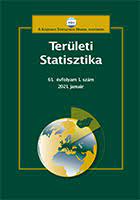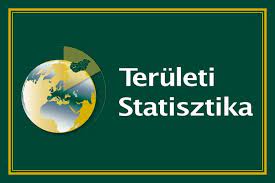Területi Statisztika 2024. januári szám
A városi szétterülés környezeti következményeinek néhány sajátossága a kül- és egyéb belterületeken, 2021
Vasárus Gábor László – Lennert József
A városi szétterülés a városfejlődés egyik meghatározó folyamata, így a posztszocialista országokban is nagy jelentőségű. Ennek során az urbánus térhasználat átalakítja a hagyományos vidéki tájat, ami számos környezeti és társadalmi fenntarthatósági kihíváshoz vezet. Az intenzív változások nemcsak az elővárosi gyűrűt formálják át, hanem városaink peremét is.  Ez a részfolyamat mikroléptékben is differenciált, így azt e széttördeltség részben elrejti egyes adatbázisokban. A tanulmány adalékokkal szolgál e sajátosság bemutatásához. A szerzők három (Győr, Kecskemét és Szeged) esettanulmányt választottak ki részletes vizsgálatra. A tanulmány – térinformatikai módszerekkel, terepi felméréssel és szakértői interjúkkal – részletesen jellemzi a demográfiai és a talajborítás-változási folyamatokat, valamint az esettanulmányok célterületei közötti különbségeket.
Ez a részfolyamat mikroléptékben is differenciált, így azt e széttördeltség részben elrejti egyes adatbázisokban. A tanulmány adalékokkal szolgál e sajátosság bemutatásához. A szerzők három (Győr, Kecskemét és Szeged) esettanulmányt választottak ki részletes vizsgálatra. A tanulmány – térinformatikai módszerekkel, terepi felméréssel és szakértői interjúkkal – részletesen jellemzi a demográfiai és a talajborítás-változási folyamatokat, valamint az esettanulmányok célterületei közötti különbségeket.
Kulcsszavak: posztszocialista urbanizáció, földhasználat változás, városi szétterülés, zöldmezős beruházások, degradáció
Some characteristics of the environmental consequences of urban sprawl in external and other internal areas, 2021
Urban sprawl is one of the most prominent processes of urban development, of great
importance in post-socialist countries, too. Urban space use reshapes the traditional rural landscape, resulting in environmental and social sustainability challenges. The intensive changes are not only reshaping the suburban belt, but also transform the outskirts of our cities. This subprocess is differentiated at micro-scale, and this fragmentation may hide it in certain databases. The study attempts to provide additions regarding this peculiarity. The authors selected three case studies for
detailed examination: those of Győr, Kecskemét and Szeged. GIS methods, field examination, surveys and expert interviews have been used to get a detailed picture of the demographic and land cover change processes, as well as the distinctions between the destination areas of the case studies. The comparison of results drawn from different methods reveal that land use changes in the study areas are more widespread than what the land cover datasets indicate. The authors’ observations show that Corine Land Cover categories describing mixed land use – especially complex cultivation patterns – are not able to capture the drastic function shift caused by intense suburbanization. Different environmental and social sustainability issues have been identified depending on the economic status of out-migrants. The paper also sheds some light on urban planning considerations regarding this emerging challenge.
Keywords: post-socialist urbanization, land cover change, urban sprawl, greenfield development, degradation



